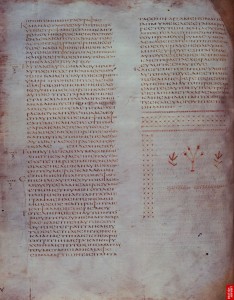 Seek the welfare of the city where I have sent you into exile, and pray to the Lord on its behalf, for in its welfare you will find your welfare.–Jeremiah 29
Seek the welfare of the city where I have sent you into exile, and pray to the Lord on its behalf, for in its welfare you will find your welfare.–Jeremiah 29
The Babylonian Diaspora did not end with Cyrus’ decree ending the Babylonian Exile in 540 BCE. Most Jews did not return to Jerusalem. The Jewish community of Babylonia continued to thrive until 1952 when government-sponsored riots led to the evacuation of a large number of Iraqi Jews to the State of Israel. Jews in Babylonia did indeed follow Jeremiah’s instruction to “build houses and plant trees.” With time, the Babylonian Diaspora became the largest and most vibrant of all Jewish communities, even outshining the Palestinian community.
Little is known about the history of Babylonian Jewry during the Second Temple period, except that Babylonians, including the great scholar Hillel “the Babylonian,” eventually did settle in Jerusalem. Great torches set atop the mountains of Palestine and Syria are said to have relayed news of the new Jewish month, and hence the dates of Jewish holidays, from the Temple to Babylonian Jewry. Jews were so well integrated in Babylonia that Romans feared that the Persian rulers of Babylonia would intercede in the First Jewish Revolt on behalf of Palestinian Jewry. Rabbinic culture became well rooted in Babylonia. Babylonian Rabbis developed sophisticated methods of study within their academies, their formulas having been inscribed in the now-dominant Babylonian Talmud by the sixth century CE. The mid seventh century leader of this community, Bustani the Exliarch or “ruler of the exile,” as a descendent of the King David even claimed the status of a potential messiah. Some Babylonian Jews even asserted that the great synagogues of Babylonia were built of stones brought from Solomon’s Temple and so carried its authority.
Scattered across the Mediterranean world, the Jewish diasporas of the west were smaller in number than Babylonian Jewry. Jewish communities existed throughout the eastern Mediterranean by the third century BCE, with concentrations in Antioch and Alexandria. The Jews of first century Alexandria are particularly well known, owing in no small part to the writings of the philosopher, historian and community leader Philo of Alexandria. The Torah was even translated into Greek in Alexandria, to serve the needs of the local community, and the Septuagint (as it was called) was placed in the great library of Alexandria.
Most Diaspora communities are known to us thanks to modern archaeological discoveries—including papyri from Egypt, dedicatory inscriptions, and from the third century CE on, discoveries of ancient synagogues, catacombs; these are also referenced in Roman law codes and in the writings of the Church fathers. No Jewish literature from this later period is extant, and so we know quite little about the western Jewry. From extant sources, however, it is clear that the Jewish communities of the Babylonian and Mediterranean Diasporas shared a “common Judaism” with their brothers and sisters in the Land of Israel, a religion that focused upon Scripture, synagogue life and the performance of the commandments of the Torah. While the Second Temple stood, Diaspora Jews made pilgrimage to Jerusalem, and many continued to send the biblically ordained sheqel tax in support of the Temple. While each Jewry and each community in Babylonia, Palestine and the Greco-Roman world developed its own unique identity, a unifying “common Judaism” is apparent throughout the evidence that has come down to us.